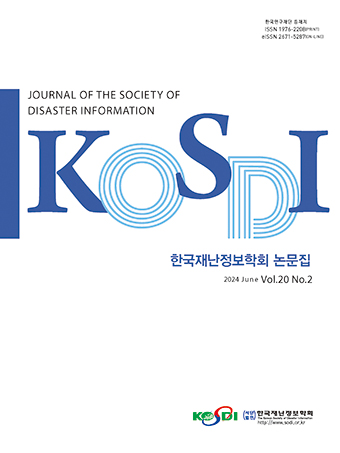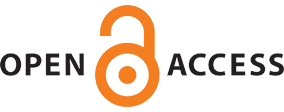Original Article
Abstract
References
Information
Purpose: The purpose of this study is to reduce serious accidents by strengthening the role of the owners safety and health resister in order to reduce the high rate of fatal accidents that occur at small-scale construction sites with a construction amount of less than 5 billion won. Method: Investigate the current status of domestic industrial accidents, the accident rate at construction sites, and the proportion by construction amount, and identify the main causes of disaster occurrence. Investigate and analyze the owner’s obligations among domestic and foreign construction safety management systems and establish improvement plans. Result: In construction work, safety management led by the owner from the planning stage is efficient. The Safety and Health Directorate is a safety management system led by the owner throughout the entire construction process, but it is not mandatory for small-scale construction projects worth less than KRW 5 billion under the Occupational Safety and Health Act, which is a cause of disasters. In particular, as there are many accidents caused by temporary facilities, fatal accidents must be reduced by creating a safety and health register at the design level. Conclusion: As shown in the comparison of domestic construction accident rates and domestic and foreign systems, it is necessary to prevent disasters at small-scale construction sites by mandating the creation of a safety and health register at the designer level even for construction projects worth less than KRW 5 billion.
연구목적: 본 연구의 목적은 국내 건설 사망 사고의 절반을 차지하는 공사 금액 50억 원 이하 소규모 현장의 재해 감소 대책의 일환으로 발주자가 주도하는 안전보건대장 역할 강화를 통한 방안을 마련하는데 있다. 연구방법: 국내 산업 재해 현황 및 건설공사 현장의 재해 발생률 및 공사 금액별 비중을 조사하고, 재해 발생의 주요인을 파악한다. 국내 외 건설공사 안전관리 제도 중 발주자의 의무를 조사하고 분석하여 소규모 건설현장의 개선방안을 수립한다. 연구결과: 건설공사는 계획 단계부터 발주자 주도의 안전관리가 효율적이다. 안전보건대장은 건설공사의 전과정에서 발주자가 주도하도록 하는 안전관리 제도지만 산업안전보건법에서 50억 이하의 소규모 건설공사는 의무화되어 있지 않아 재해 예방을 위해 도입이 필요하다. 특히 가시설에서 기인한 사고가 많아 설계 차원의 안전보건 대장 작성을 통하여 사망재해를 줄여야 한다. 결론: 국내 건설공사 재해율 비교 및 국내외 제도를 비교 연구한 결과 50억 미만의 건설공사에도 설계자 차원의 안전보건대장을 작성을 의무화하여 소규모 건설공사 현장의 재해 예방이 필요하다.
- Ahn, H.S. (2010). "Promotion of the client-initiative construction safety and health management." The Regional Association of Architectural Institute of Korea, Vol. 12, No. 4 , pp. 353-360.
- Jo, N.O. (2020). A Study on the Implementation and Improvement of Safety and Health Responsibilities of Construction Project Owners. Master Thesis, Kyonggi University.
- Kim, S.E. (2019). A Study on Measures to Reduce Fatal Falls at Construction Sites (Focusing on small-scale construction sites with less than 50 people). Master Thesis, Kyonggi University.
- Lee, J.H., Shon, T.H. (2023). In-depth Analysis of Fatal Accidents in the Construction Industry based on CSI Data. Construction Economy Research Institude of Korea, Seoul, Korea.
- Lim, S.J., Seo, J.M., Won, J.H., Kim, C.W. (2022). "Analysis of the necessity of introducing the obligation to take safety and health measures for construction orderers using multivariate analysis." Korean Society of Safety, Vol. 37, No. 1, pp. 20-29.
- Ministry of Employment and Labor (MOEL) (2024). Status of Industrial Accidents as of the end of December 2023. [Accessed on 01 October 2024] Available from: URL:
https://www.moel.go.kr/policy/policydata/view.do?bbs_seq=20240401868 - Oh, K.T. (2024). "A study on the reinforcement of disaster prevention for construction stakeholders in Korea." Journal of the Society of Disaster Information, Vol. 20, No. 1, pp. 192-198.
- Park, Y.S., Park, Y.J., Kim, Y.Y. (2022). "A study on the effect of expansion of responsibilities and obligations for construction accidents on improvement of safety management system." Journal of the Society of Disaster Information Vol. 18, No. 2, pp. 314-323.
- Publisher :The Korean Society of Disaster Information
- Publisher(Ko) :한국재난정보학회
- Journal Title :Journal of the Society of Disaster Information
- Journal Title(Ko) :한국재난정보학회논문집
- Volume : 20
- No :4
- Pages :849-857
- DOI :https://doi.org/10.15683/kosdi.2024.12.31.849




 Journal of the Society of Disaster Information
Journal of the Society of Disaster Information







